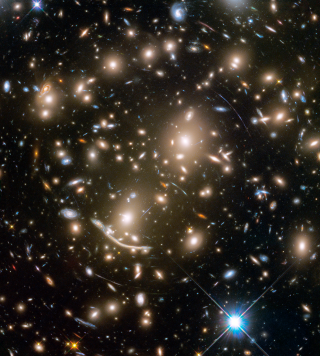Bibcode
Cornwell, Daniel J.; Kuchner, Ulrike; Aragón-Salamanca, Alfonso; Gray, Meghan E.; Pearce, Frazer R.; Aguerri, J. Alfonso L.; Cui, Weiguang; Méndez-Abreu, J.; Peralta de Arriba, Luis; Trager, Scott C.
Referencia bibliográfica
Monthly Notices of the Royal Astronomical Society
Fecha de publicación:
12
2022
Número de citas
16
Número de citas referidas
11
Descripción
Next-generation wide-field spectroscopic surveys will observe the infall regions around large numbers of galaxy clusters with high sampling rates for the first time. Here, we assess the feasibility of extracting the large-scale cosmic web around clusters using forthcoming observations, given realistic observational constraints. We use a sample of 324 hydrodynamic zoom-in simulations of massive galaxy clusters from TheThreeHundred project to create a mock-observational catalogue spanning 5R200 around 160 analogue clusters. These analogues are matched in mass to the 16 clusters targetted by the forthcoming WEAVE Wide-Field Cluster Survey (WWFCS). We consider the effects of the fibre allocation algorithm on our sampling completeness and find that we successfully allocate targets to 81.7 ${\rm {per \,cent}}\, \pm$ 1.3 of the members in the cluster outskirts. We next test the robustness of the filament extraction algorithm by using a metric, Dskel, which quantifies the distance to the filament spine. We find that the median positional offset between reference and recovered filament networks is Dskel = 0.13 ± 0.02 Mpc, much smaller than the typical filament radius of ~ 1 Mpc. Cluster connectivity of the recovered network is not substantially affected. Our findings give confidence that the WWFCS will be able to reliably trace cosmic web filaments in the vicinity around massive clusters, forming the basis of environmental studies into the effects of pre-processing on galaxy evolution.
Proyectos relacionados

Evolución de Galaxias en Cúmulos
Las estructuras en el Universo, a todas las escalas de masa, se han formado de una forma jerárquica y principalmente producidas por fusiones de galaxias. Sin embargo, esta formación jerárquica de las galaxias está modulada por el entorno en el cual se crean y evolucionan. Mientras que las galaxias de campo presentan una evolución pasiva, los
Jairo
Méndez Abreu